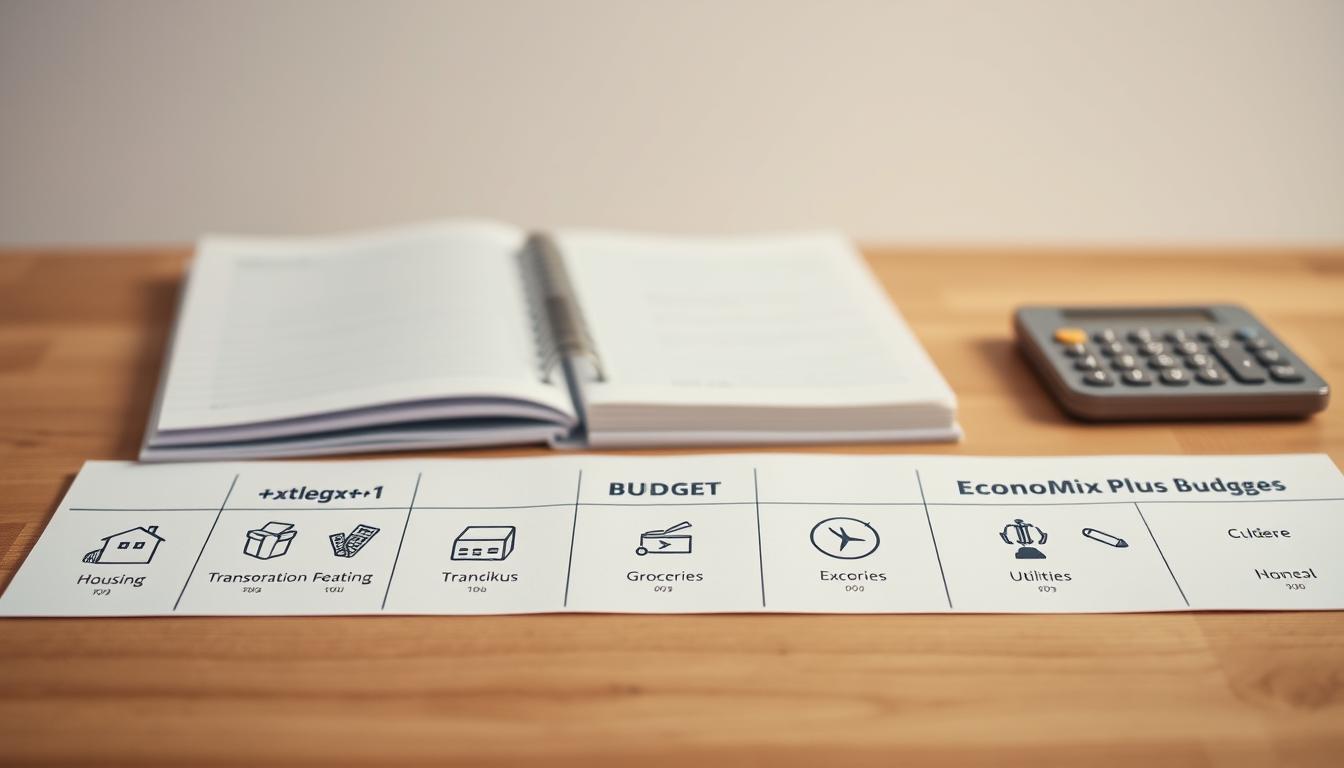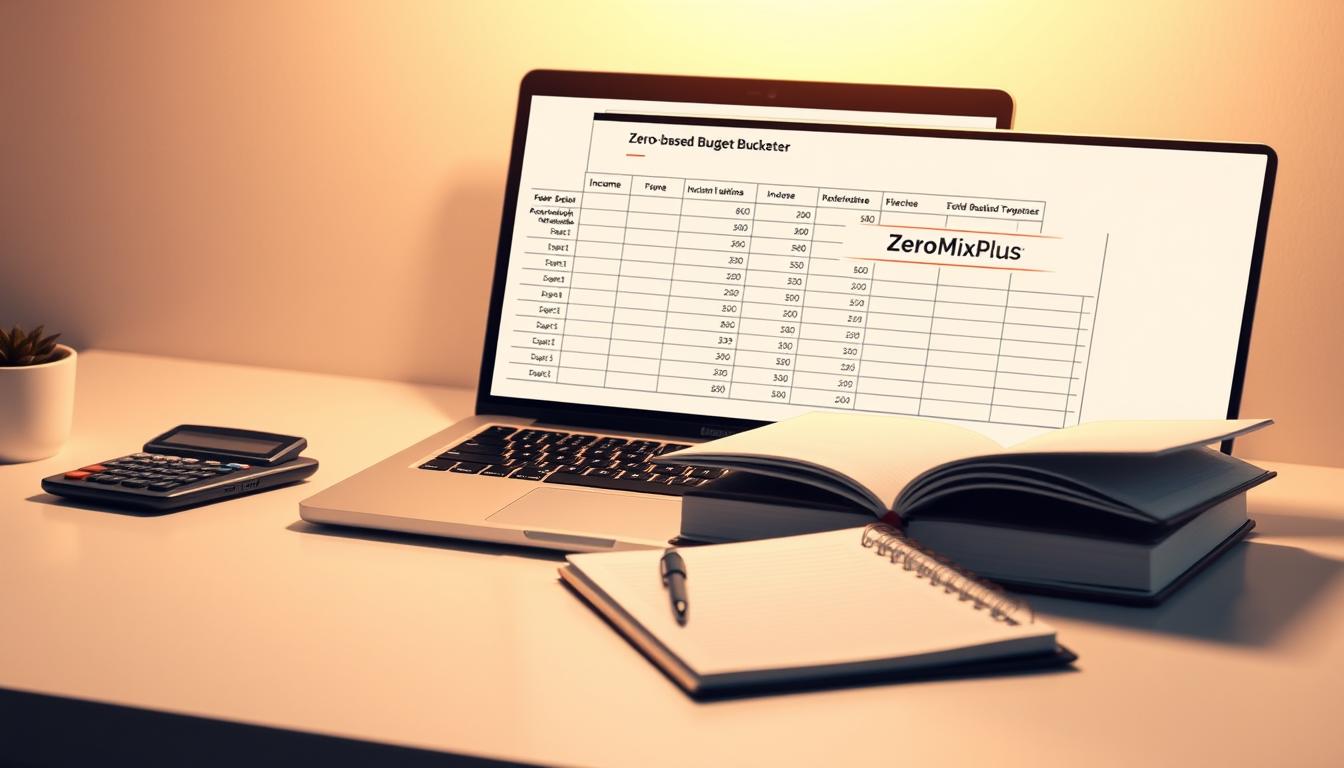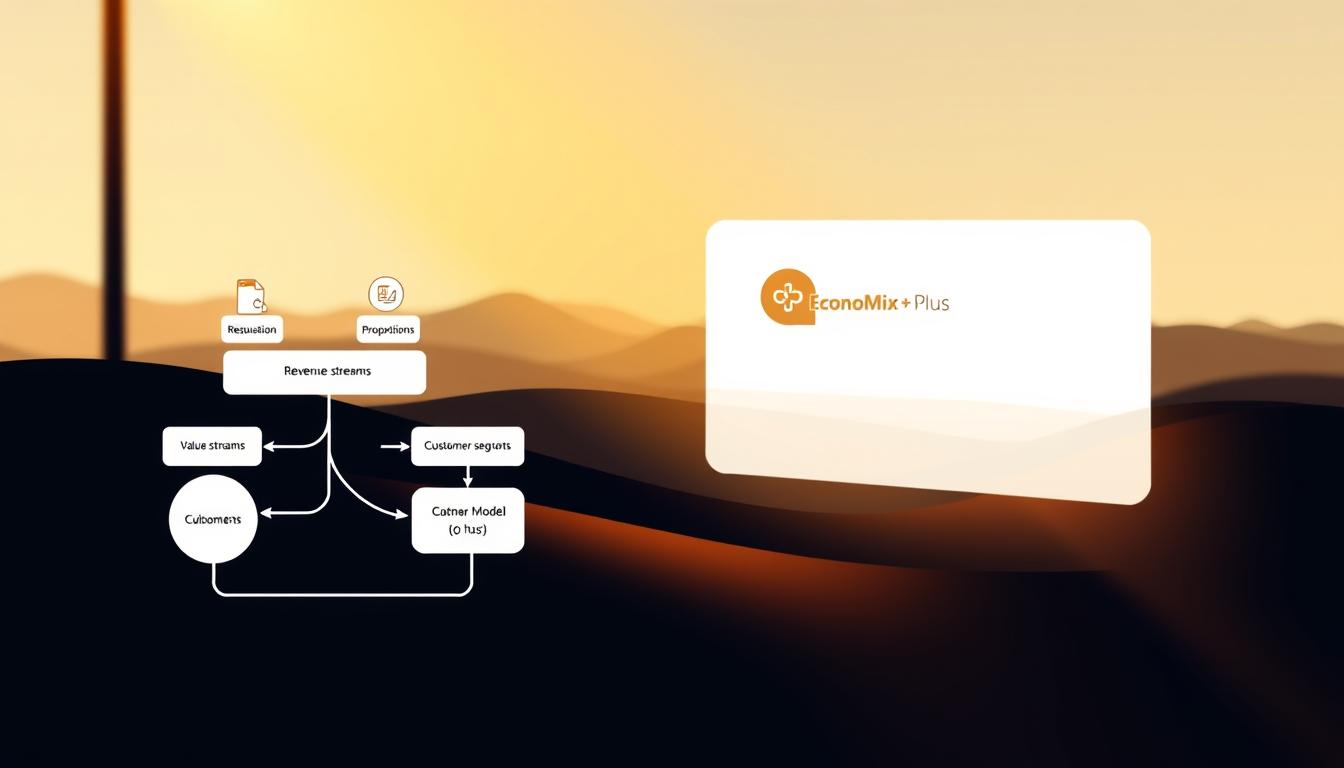Feeling overwhelmed by your expenses and unsure how to manage your money effectively? You’re not alone. Many individuals struggle to keep their finances in check, but there’s a powerful tool that can help: a budget.
By creating a personalized budget, you can take control of your financial situation and start working towards your goals.
A well-crafted budget isn’t just about restricting your spending; it’s about understanding where your money is going and making intentional decisions about your income and expenses. This guide will walk you through a step-by-step process to develop a plan that works for you, helping you achieve financial stability and reach your goals.
Key Takeaways
- Understand the importance of budgeting in achieving financial stability.
- Learn how to track your expenses effectively.
- Discover how to create a personalized budget that suits your financial situation.
- Gain control over your finances and make intentional decisions about your money.
- Start working towards your financial goals with confidence.
Understanding Your Current Financial Situation
To take control of your finances, it’s essential to understand where you stand financially today. This involves taking a close look at your income, expenses, debts, and financial goals.
Signs You Need a Budget
Recognizing the signs that you need a budget is the first step toward financial improvement. If you constantly run out of money before the end of the month, have no idea where your paycheck goes, or feel anxious about your finances, these are clear indicators that you need to create a budget.
Living paycheck to paycheck, accumulating debt, or having no emergency savings are serious warning signs that your financial situation needs immediate attention through proper budgeting.
The Benefits of Budgeting
The benefits of budgeting extend beyond just tracking expenses—it reduces financial stress, helps you avoid debt, enables you to save for important goals, and gives you a sense of control over your financial life.
Common Financial Challenges
Common financial challenges like irregular income, unexpected expenses, and inflation can derail your finances. However, a well-planned budget helps you navigate these obstacles more effectively by making you more mindful of your spending habits.
Understanding your current spending patterns is crucial before creating a budget—take time to review your bank statements and categorize your expenses to get a clear picture of where your money is currently going.
Struggling Financially? Learn How to Create an Effective Budget
Taking control of your financial situation starts with developing a comprehensive budget. This process involves several key steps that help you understand your financial standing and make informed decisions about your money.
The Five-Step Budgeting Process
Creating a budget can be simplified into five manageable steps. First, you need to list your income from all sources. Next, list your expenses to understand where your money is going. Then, subtract your expenses from your income to determine if you’re operating at a surplus or deficit.
After that, track your expenses throughout the month to stay on top of your spending and effectively plan for upcoming events.
Finally, make a new budget before the month begins to ensure you’re always prepared to create budget strategies that work for you.
Choosing Your Budgeting Method
The method you choose for budgeting is crucial for your long-term success. You can opt for zero-based budgeting, where every dollar is given a purpose, or the 50/30/20 budgeting rule, which allocates 50% of your income towards needs, 30% towards wants, and 20% towards savings. Alternatively, you might prefer envelope budgeting, a cash-based system that categorizes your spending.
Tools to Help You Budget
Various tools can make budgeting easier and more accessible. You can use a simple pen and paper, a computer spreadsheet, or a budgeting app that automatically tracks your spending and categorizes expenses. Digital budgeting tools offer advantages like real-time tracking and easy access to your budget from anywhere.
| Budgeting Tool | Features | Accessibility |
|---|---|---|
| Pen and Paper | Manual tracking, simple | High |
| Computer Spreadsheet | Automated calculations, customizable | Medium |
| Budgeting App | Automatic tracking, real-time updates | High |
By following these steps and choosing the right tools, you can create an effective budget that helps you manage your finances and achieve your financial goals.
Step 1: List Your Income
Listing your income is the first step in managing your finances effectively. To create a comprehensive budget, you need to identify all the money coming in during the month, including any rent or mortgage payments. This will help you categorize your income and account for all sources of revenue.
Identifying All Income Sources
Your income includes regular paychecks, side hustles, freelance work, and any other money you receive. It’s essential to account for every dollar, including occasional income like cash gifts or tax refunds. When you have multiple income sources, create separate budget lines for each one to ensure accuracy.
For instance, if you have a primary job and a part-time gig, you’ll want to list both incomes separately. This will help you understand how much money you have available for expenses and savings.
Dealing with Irregular Income
If your income varies from month to month, budgeting can be more challenging. To manage irregular income, review your earnings from the past few months and use the lowest amount as your baseline for the current month. You can adjust this figure later if you earn more.

Calculating Your Net Monthly Income
When calculating your income, use your net income (take-home pay after taxes and deductions) rather than gross income. This ensures your budget reflects the actual money available to you.
| Income Source | Monthly Amount |
|---|---|
| Primary Job | $4,000 |
| Freelance Work | $1,000 |
| Total Net Income | $5,000 |
By accurately listing your income, you’ll be able to create a more effective budget that accounts for every dollar. Make sure to review and adjust your income budget lines regularly to stay on track with your financial goals.
“A budget is telling your money where to go instead of wondering where it went.”
Step 2: Track and Categorize Your Expenses
The key to creating a realistic budget plan lies in accurately tracking and categorizing your expenses into specific categories. By doing so, you’ll gain a clear understanding of where your money is going each month.
The Four Walls: Essential Expenses First
When planning for the month ahead, prioritize your essential expenses, often referred to as the “Four Walls”: food, utilities, shelter, and transportation. Create a budget category for each of these essentials, including your rent mortgage, and then list your specific expenses under each category.
For instance, under “shelter,” you might have rent or mortgage payments, and under “transportation,” you could have car loan payments, insurance, and gas expenses. This way, you can effectively manage your finances and ensure you have a clear overview of your spending in relation to your bank account.
Creating Budget Categories
Organize your expenses by creating clear budget categories. This helps in separating fixed expenses, such as rent or mortgage, insurance, and loan payments, from variable expenses like groceries, gas, and entertainment. By doing so, you’ll better understand which areas you can adjust to optimize your spending and effectively create a budget plan for your financial account.

Fixed vs. Variable Expenses
Your budget will likely include both fixed and variable expenses. To effectively create a budget, it’s important to categorize these expenses. Fixed expenses remain the same every month, such as your rent or mortgage, while variable expenses change, like groceries or gasoline.
Understanding the difference between these two types of expenses is crucial for making informed financial decisions.
Tracking Your Spending Habits
To effectively track your spending habits, review your bank statements to identify patterns in your spending. Look for areas where you can cut back, as small, frequent purchases can add up significantly over time.
Utilize a notebook, spreadsheet, or budgeting app to record every purchase and compare your actual spending against your budgeted amounts regularly.
- Prioritize your “Four Walls” (essential expenses): food, utilities, shelter, and transportation.
- Separate fixed expenses from variable expenses to better understand your spending.
- Regularly track your spending habits to identify areas for adjustment.
By following these steps, you’ll be able to create a more accurate and effective budget that accounts for all your expenses.
Step 3: Create a Zero-Based Budget
To create a budget that truly works, you need to adopt a zero-based approach where every dollar is accounted for. This means that your income minus expenses should equal zero. As Ramsey said, “A budget is telling your money where to go instead of wondering where it went.”

Giving Every Dollar a Purpose
A zero-based budget is a powerful financial tool where you assign a job to every dollar of your income—whether it’s for expenses, savings, or paying debt. This approach ensures that every dollar is working towards your financial goals.
Balancing Your Budget
To balance your budget, start by subtracting your essential expenses from your income. Then, allocate the remaining money to other categories like debt repayment, including your rent mortgage, savings goals, and discretionary spending.
Additionally, ensure that you monitor your bank account to track these categories effectively. Make sure every dollar has a designated job.
What to Do When Numbers Don’t Add Up
If your expenses exceed your income, you’ll need to make adjustments. Look first at reducing discretionary spending like entertainment, dining out, or subscription services. By doing so, you can create a balanced budget that works for you.
As you finalize your zero-based budget, remember that it’s not about spending every single cent you earn, but about giving every dollar a purpose. By doing so, you’ll be in control of your finances and make progress towards your financial goals.
Step 4: Cutting Expenses When Money Is Tight
Cutting expenses is a vital step in managing your finances effectively, especially during tough times. When your budget is strained, it’s essential to identify areas where you can cut back without significantly impacting your quality of life.
Non-Essential Spending
The first step in reducing your expenses is to identify and eliminate non-essential spending. Review your budget for subscriptions, memberships, and services you rarely use. Consider temporarily suspending or canceling them to free up more money in your budget.
Examples of non-essential spending include dining out frequently, subscription services like streaming platforms or gym memberships, and luxury items. By cutting back on these expenses, you can allocate more funds towards essential expenses.

Creative Ways to Reduce Monthly Expenses
There are several creative ways to reduce your monthly expenses. Meal planning is an effective strategy to minimize food waste and save on groceries. Using coupons, cashback apps, and negotiating bills like insurance and internet services can also lead to significant savings. Implementing a temporary “spending freeze” on non-essential purchases can further help.
Saving on the Four Walls
The “Four Walls” – food, utilities, housing, and transportation – are essential expenses that can often be optimized for savings.
Food Savings Strategies
To save on food, consider meal planning, buying in bulk, using grocery store loyalty programs, and limiting restaurant meals to special occasions. These strategies can significantly reduce your food expenses.
Utility Cost Reduction
Simple habits like adjusting your thermostat, washing clothes in cold water, unplugging electronics when not in use, and regularly replacing air filters can lower your utility costs.
Housing and Transportation Savings
For housing and transportation, consider options like getting a roommate to split rent, refinancing your mortgage if beneficial, combining errands to save on gas, or using public transportation. Downsizing your vehicle or negotiating a better deal on your current car payment can also provide relief.
| Expense Category | Savings Strategy |
|---|---|
| Food | Meal planning, buying in bulk, using loyalty programs |
| Utilities | Adjusting thermostat, washing in cold water, unplugging electronics |
| Housing | Getting a roommate, refinancing mortgage |
| Transportation | Combining errands, using public transportation, downsizing vehicle |
By implementing these strategies, you can effectively cut your expenses and better manage your budget when money is tight.
Step 5: Finding Ways to Increase Your Income
If cutting costs isn’t enough, it’s time to explore ways to boost your income. When you’ve already minimized your expenses, the next logical step is to focus on increasing your earnings to balance your budget.
There are several strategies you can employ to increase your income. One effective way is to take on a side hustle or gig work. This could range from driving for Uber, delivering meals, selling handmade products, or even tutoring online. The flexibility of gig work allows you to earn extra money on your own schedule.
Side Hustles and Gig Work

Side hustles offer a flexible way to earn additional income. You can choose from a variety of options such as food delivery, rideshare driving, pet sitting, or leveraging your skills in graphic design or writing. This not only brings in extra cash but also allows you to utilize your free time productively.
Selling Unused Items
Another way to generate immediate cash is by selling unused items from your home. You can declutter your space and earn money by selling items through online marketplaces, consignment shops, or yard sales.
Asking for a Raise or Changing Jobs
If you’re currently employed, consider discussing a potential raise with your manager based on your performance. If your current job doesn’t offer opportunities for growth, it might be time to explore other job opportunities that better match your skills and salary expectations.
Working Overtime or Additional Hours
Working overtime or taking on extra shifts at your current job is another viable option. This can provide a significant boost to your income without requiring a long-term commitment.
To summarize, increasing your income can be achieved through various means. The table below outlines some of these strategies and their potential benefits.
| Strategy | Potential Benefits |
|---|---|
| Side Hustles/Gig Work | Flexible scheduling, extra income |
| Selling Unused Items | Immediate cash, decluttering |
| Asking for a Raise | Increased salary, job satisfaction |
| Working Overtime | Additional income, potential for career advancement |
Maintaining Your Budget for Long-Term Financial Success
To achieve long-term financial success, it’s crucial to regularly review and update your budget. While your budget shouldn’t change too much from month to month, the fact is, no two months are exactly the same. That’s why you need to create a new budget every single month—before the month begins.
When you’re ready to start your next budget, just copy over this month’s budget to the next. Then make changes for anything new that’s coming up, such as celebrations, holidays, seasonal expenses, semiannual expenses, and annual expenses.
Building an emergency fund should be a top priority once your budget is established—aim to save at least $1,000 initially, then work toward 3-6 months of essential expenses to protect yourself from financial emergencies without resorting to debt.
Regular budget reviews are essential for long-term success—schedule monthly “money dates” with yourself (or your partner) to track your progress, celebrate wins, and make necessary adjustments to your financial plan.
As your income increases or financial situation changes, make sure to update your budget accordingly—avoid lifestyle inflation by intentionally directing additional income toward your financial goals rather than automatically increasing spending.
The ultimate goal of budgeting is to move from financial survival to financial freedom. Once you’ve established control over your finances, you can shift focus from managing debt and covering basics to building wealth and funding the life experiences that matter most to you.
FAQ
▶
▶
You can also use the 50/30/20 rule as a guideline, allocating 50% of your income towards essential expenses, 30% towards discretionary spending, and 20% towards saving and debt repayment.
▶
▶
▶
▶
▶













